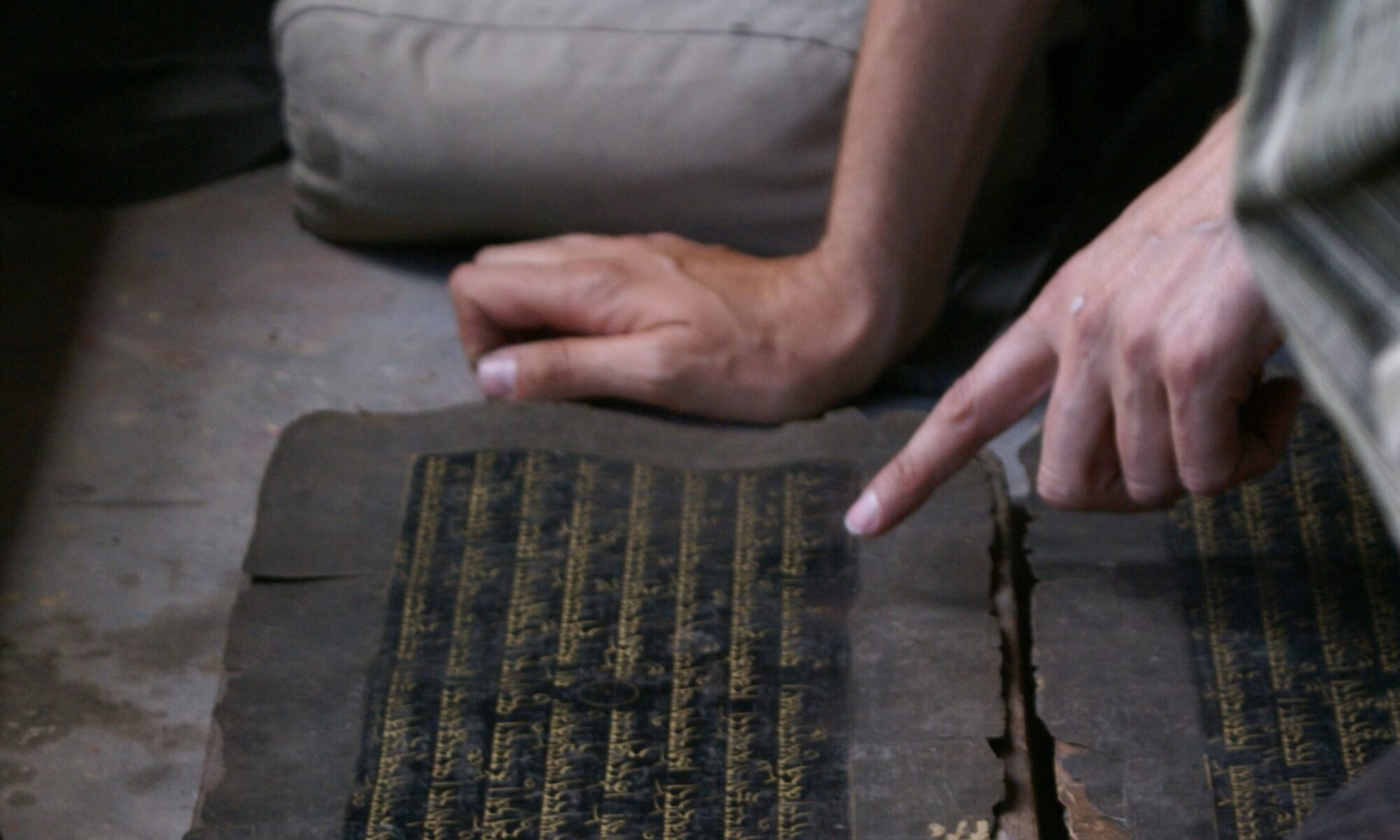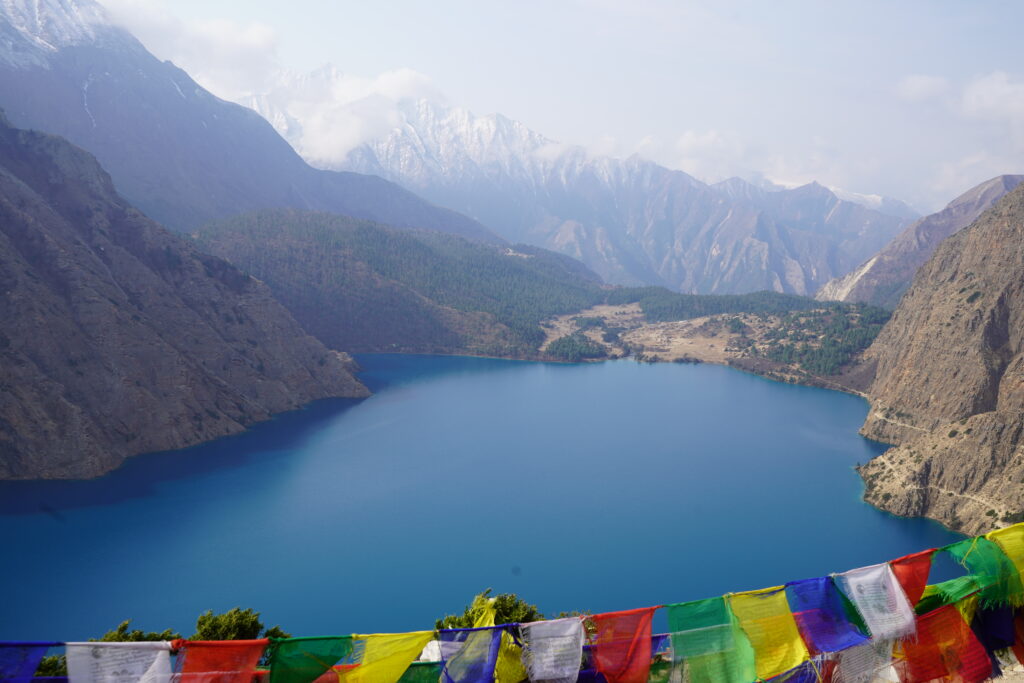
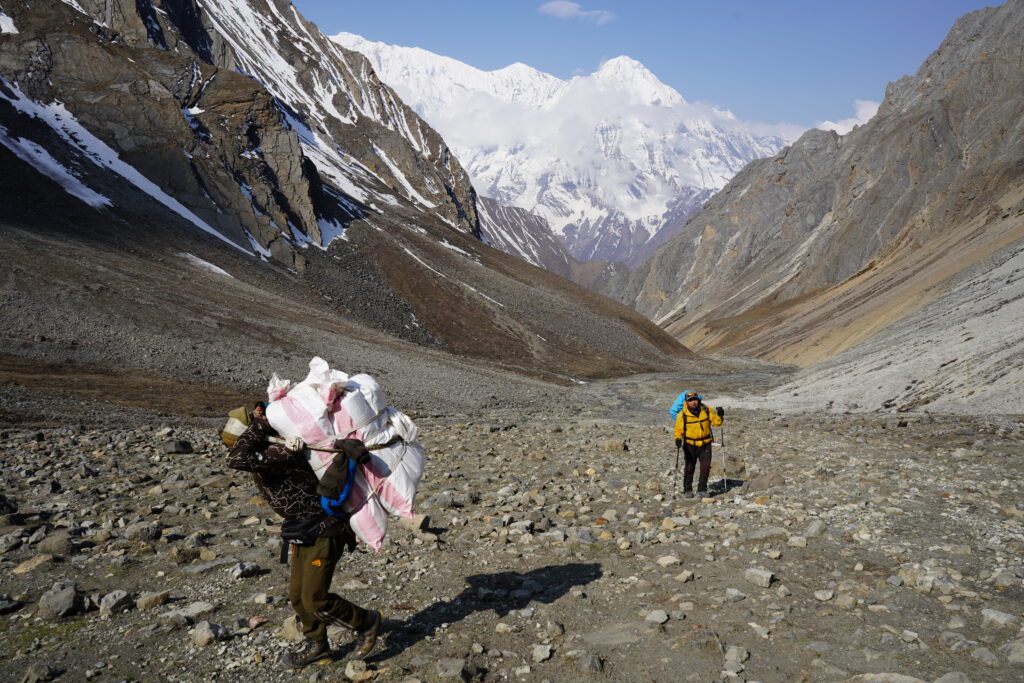
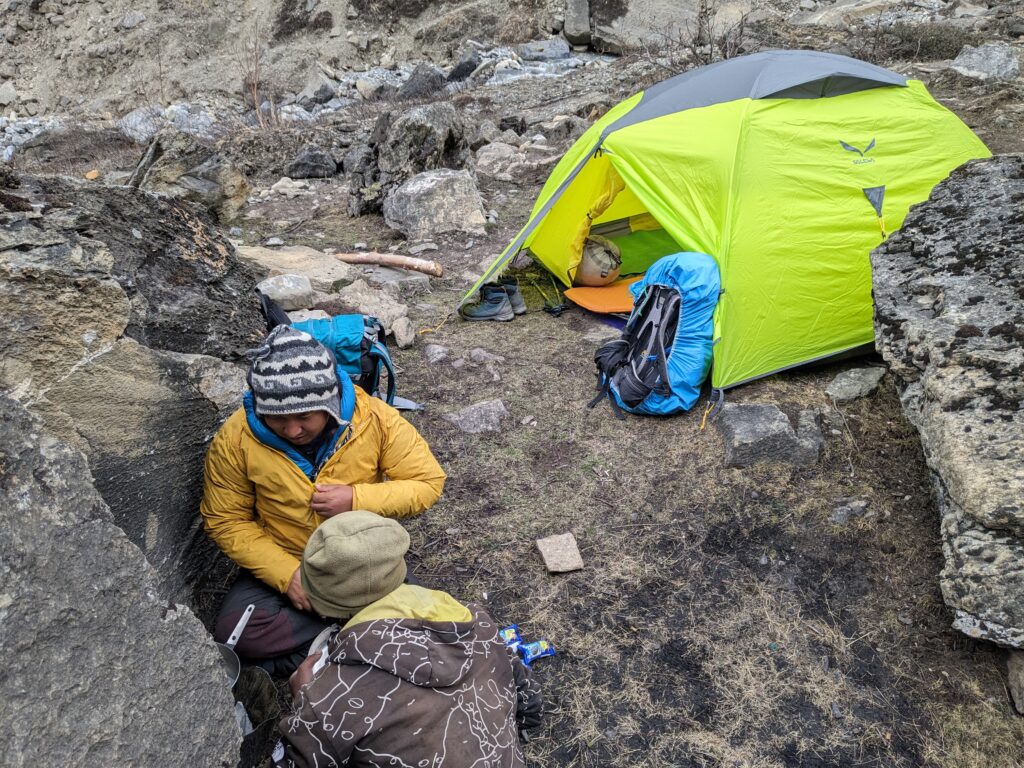
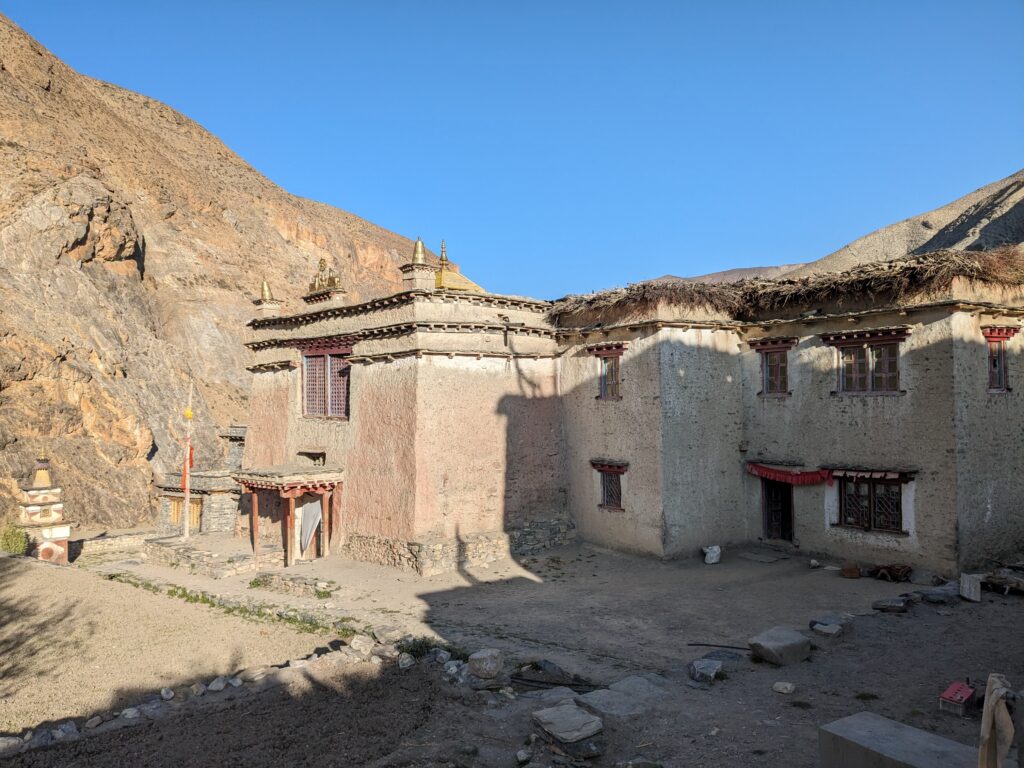
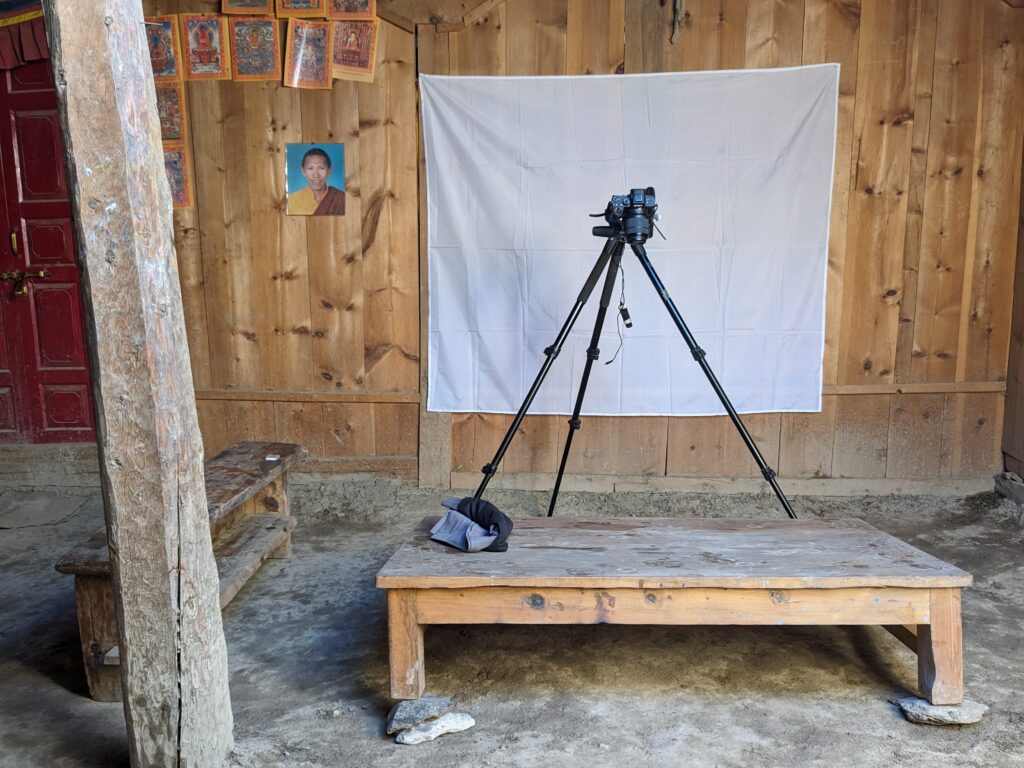
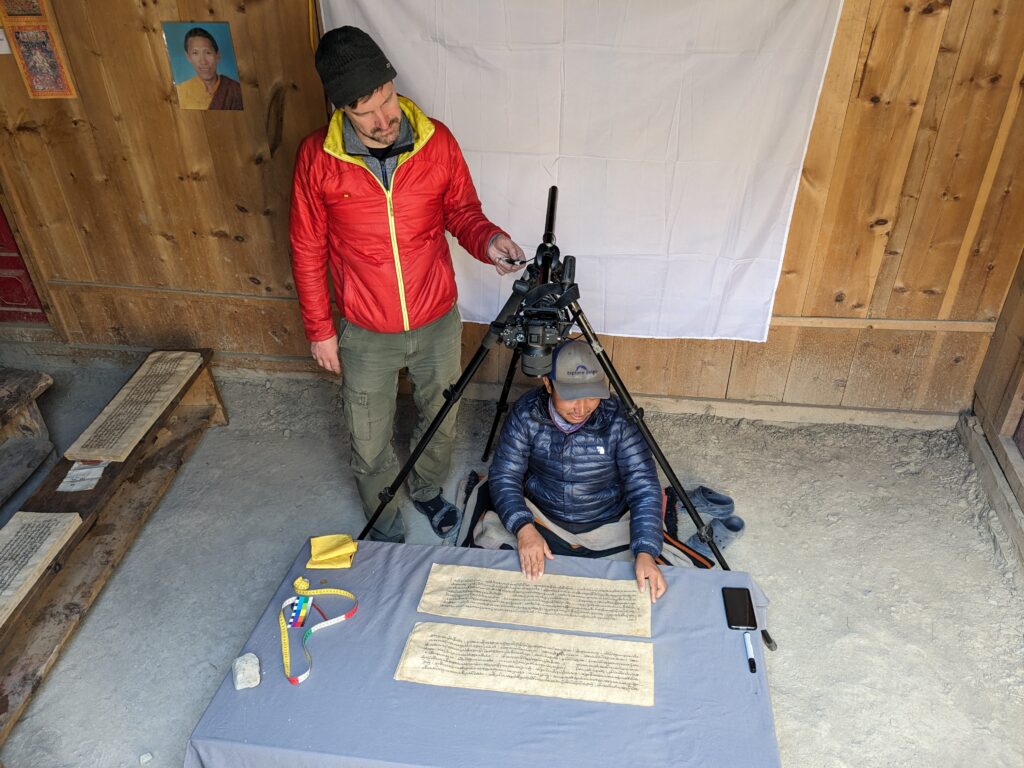
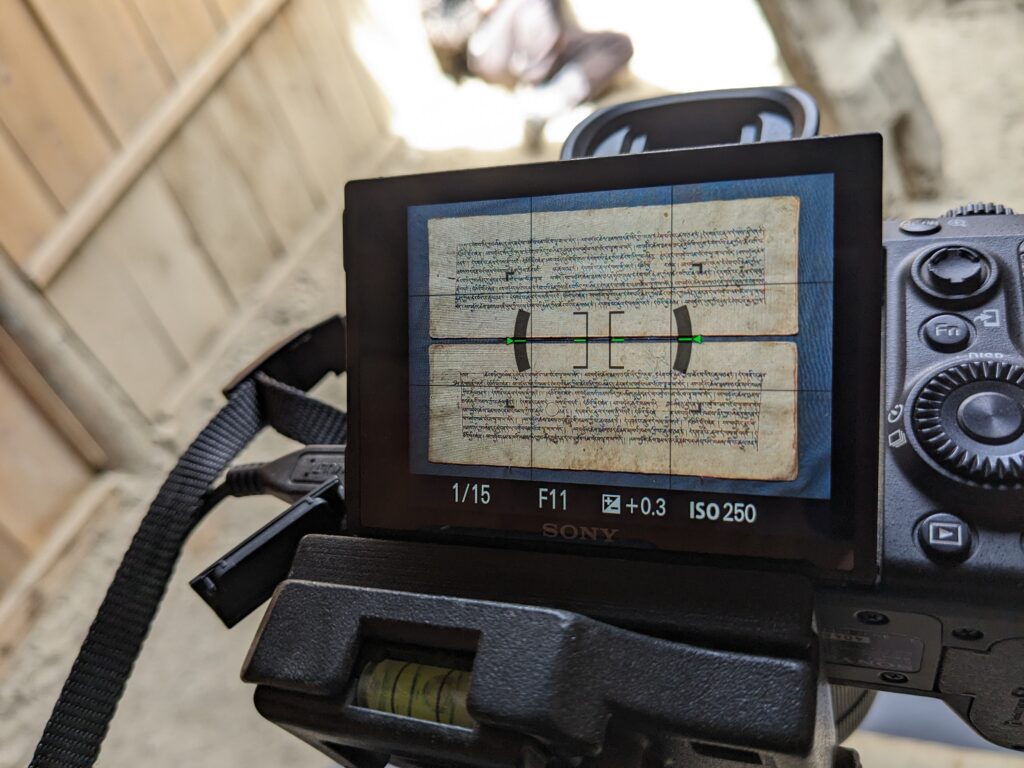
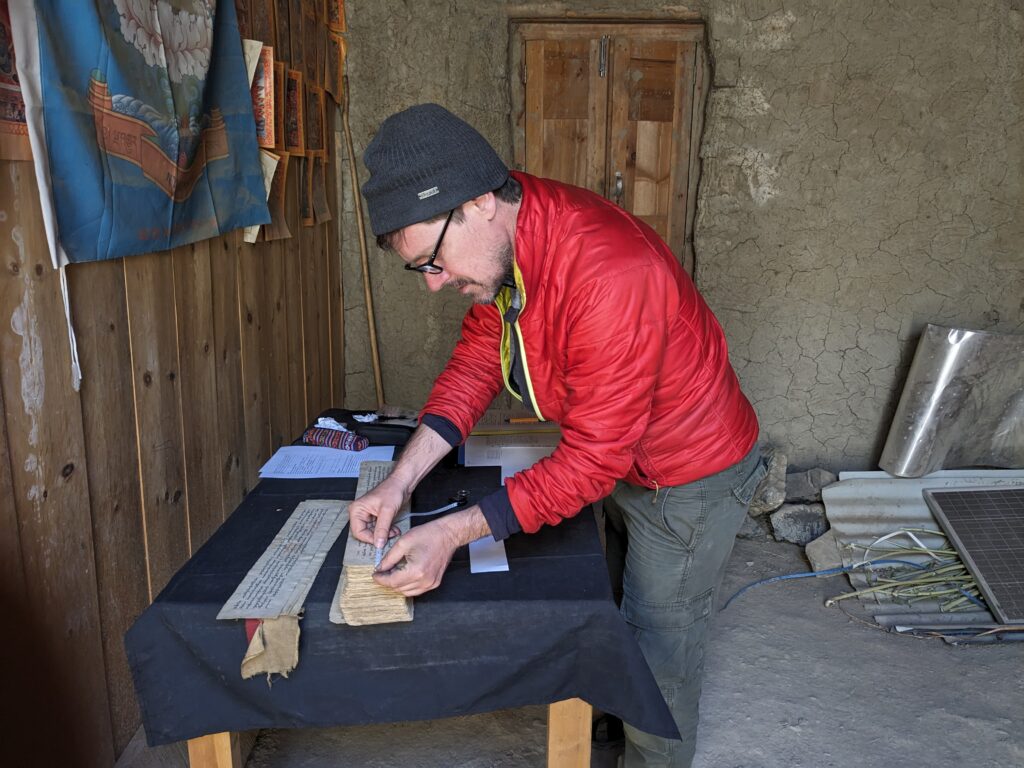
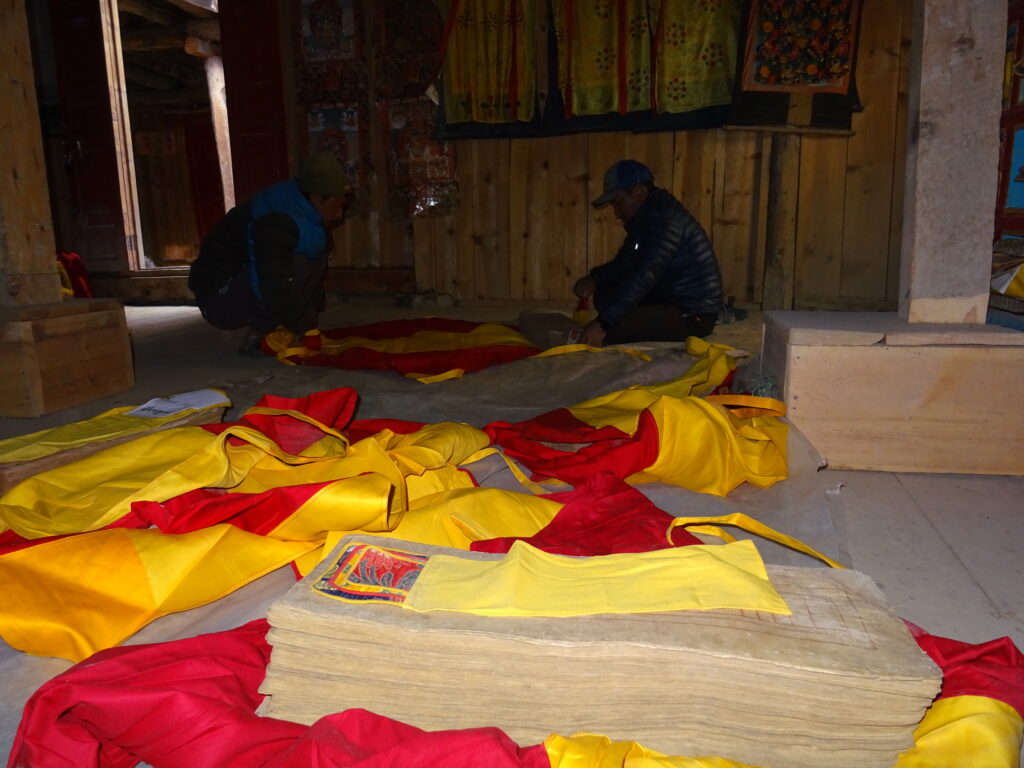
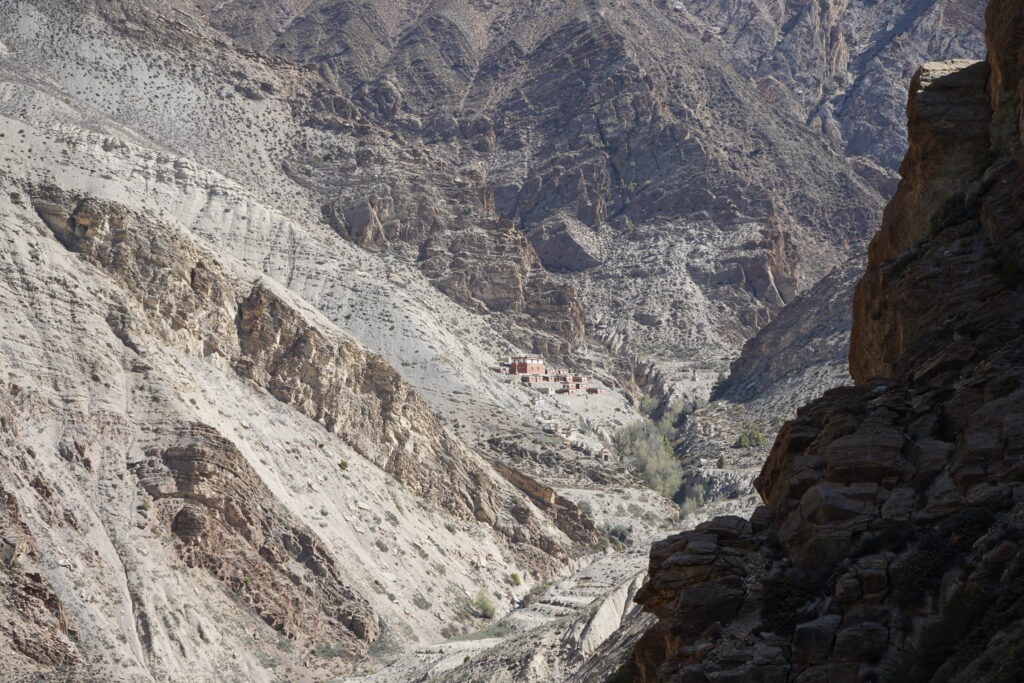
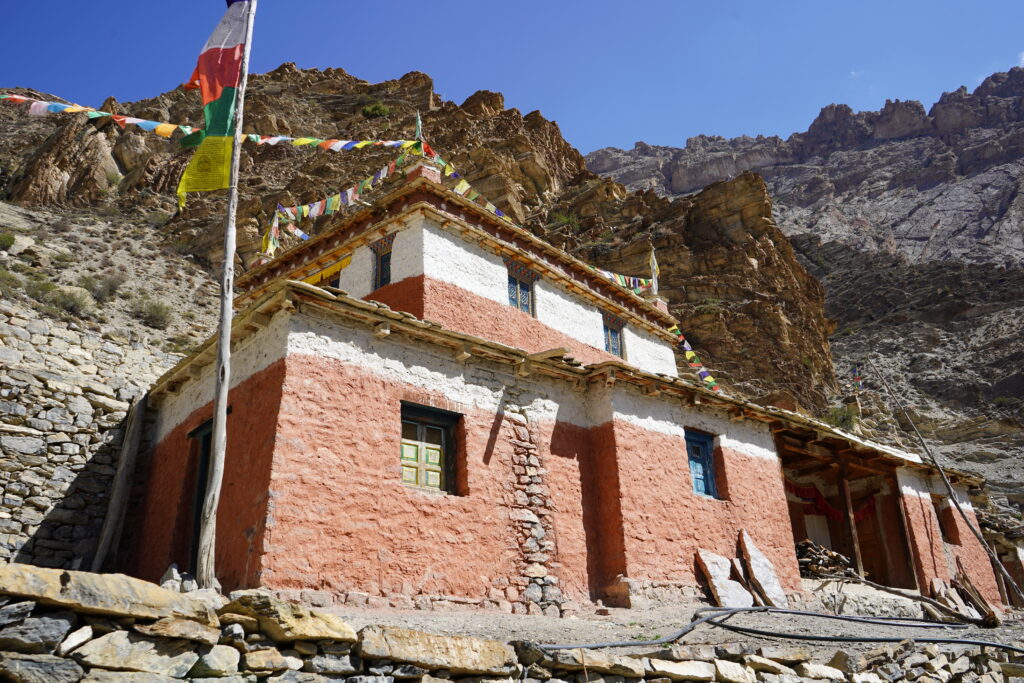
Nesar (gnas gsar) Monastery is located in the village of Bicher/Vijer in Upper Dolpo and lies at an altitude of ca. 3.800 meters. It houses an incredible treasure of older manuscripts, consisting of 642 volumes with altogether some 160.000 folios, 150 of them illuminated. A first rough handlist of these volumes was produced by Amy Heller ((Heller 2007 and 2009). As outlined by Heller, the volumes stem from three different monastic collections. Most of the volumes belonged originally to Nesar, but one collection of 98 volumes was relocated from nearby Lang (glang) Monastery and another collection of 71 volumes from nearby Serkhang (gser khang) Temple. The close connections between these monasteries were studied by Klaus-Dieter Mathes (Mathes 2003). In 2014, Tenzin Gyaltsen (bstan ‘dzin rgyal mtshan), the head lama of Nesar Monastery, kindly provided TMPV with photographs of Nesar manuscripts, deemed to constitute a “complete Kanjur.” It is these 88 volumes which were earlier referred to as “Dolpo Kanjur” in the rKTs database.
During the first field work in 2018, it was understood that these 88 volumes stem actually from all of the three collections of Nesar, Lang, and Serkhang, and are in that sense an artificial collection, even though close connections between textual sources from these monasteries have to be assumed. For this reason, it became necessary to document the entire collection in a systematic fashion and to digitize all volumes that had not been photographed before.
In August & September 2018, the 98 canonical volumes of Lang Monastery (L1-L98 in Amy Heller’s initial inventory from 2009) were digitized, followed by the documentation of the 103 canonical volumes that constitute the core of the canonical collections of Nesar Monastery (N1-N103 in Heller’s inventory) in September 2019.
In May 2024, TMPV visited Bicher again in order to conclude the digitization of the Serkhang collection. In Heller’s inventory from 2009, this collection comprises altogether 71 volumes. Most of the first 45 volumes of these (T1–T45 in Heller 2009) are larger representational volumes that contain canonical texts. Most noteworthy among these are 14 volumes of the Vinaya (‘dul ba), fragments of seemingly two different sets, manuscripts of which are not found in other locations in Dolpo documented so far. The collection further contains several volumes of the Śatasāhasrikāprajñāpāramitāsūtra (‘bum), the Pañcaviṃśatisāhasrikāprajñāpāramitā (nyi khri), volumes of other individual sūtras and also non-canonical texts such as manuscripts of the Maṇi bka’ ‘bum, Padma bka ‘thang, Klu ‘bum collections, biographies of Mi la ras pa and ‘Brom ston (the latter texts pertaining to T46–T55 in Heller 2009). The inventory in Heller 2009 lists further several smaller historiographical and ritual texts (T56–71), which were not located among the volumes of the collection in Nesar Monastery at present. The main reason for this is, so we were told by the head lama, that these volumes are in active use and hence shifted to different places. This was confirmed by spotting a few of the concerned volumes in the newly renovated Serkhang Temple. This temple is located just below Lang Monastery, in the valley of Lang, about one hour by foot from Bicher village in the North-Western direction. Given this state of affairs, these smaller manuscripts and prints in active use were not digitized. Altogether 57 volumes were photographed, one of which, an Abhidharma commentary, is not listed in Heller 2009.
With this, the TMPV’s digitization work at Nesar Monastery is concluded. The images of all collections along with the textual content data will be made available through the rKTs archive in near future. Further, images and data are also shared with our long-term cooperation partner BDRC.
